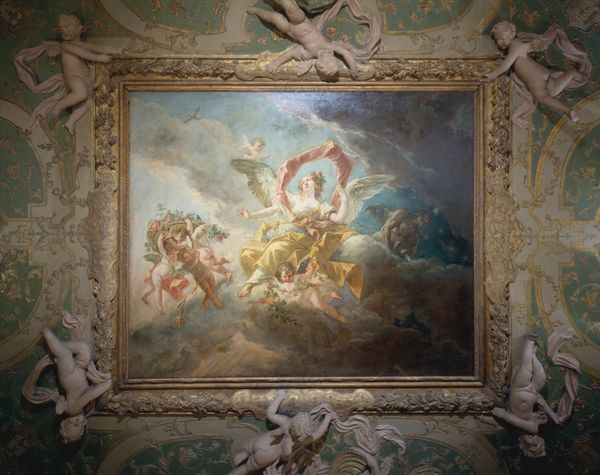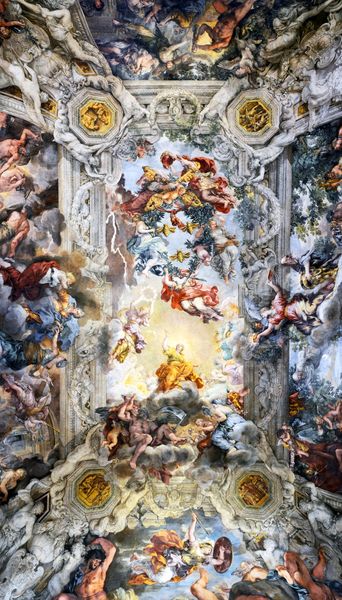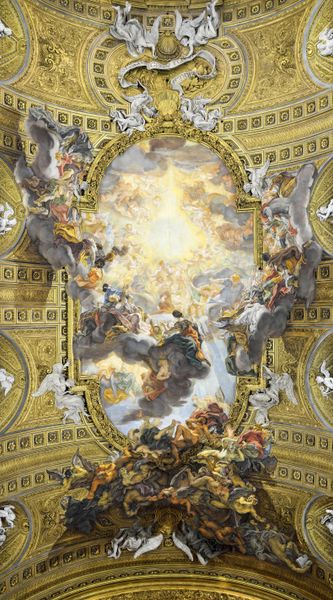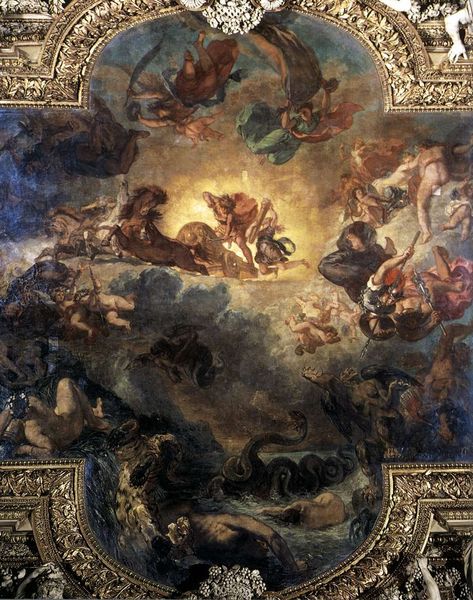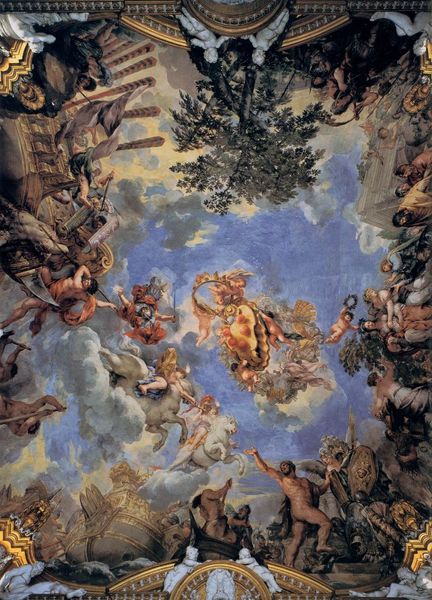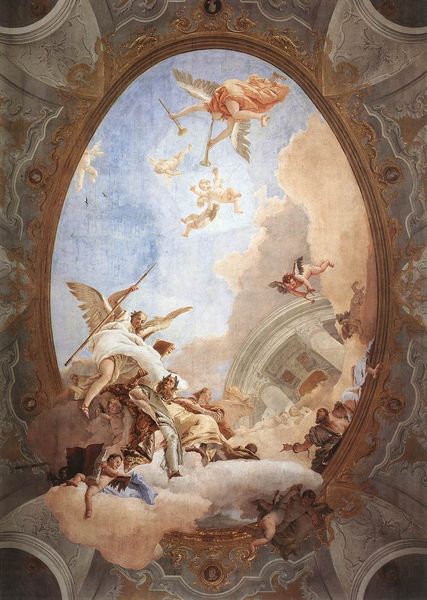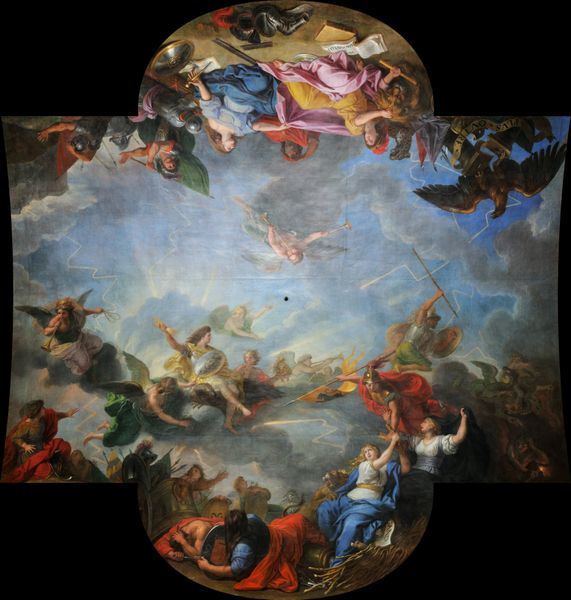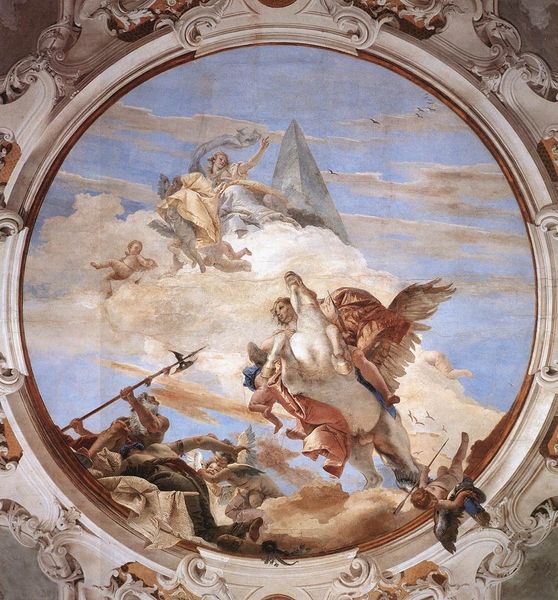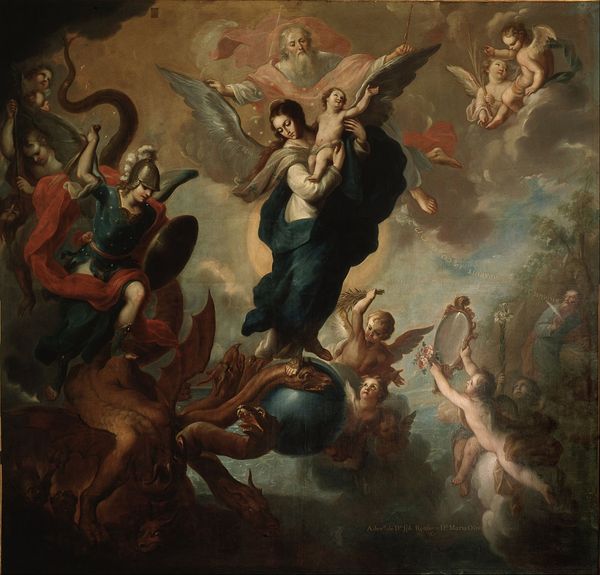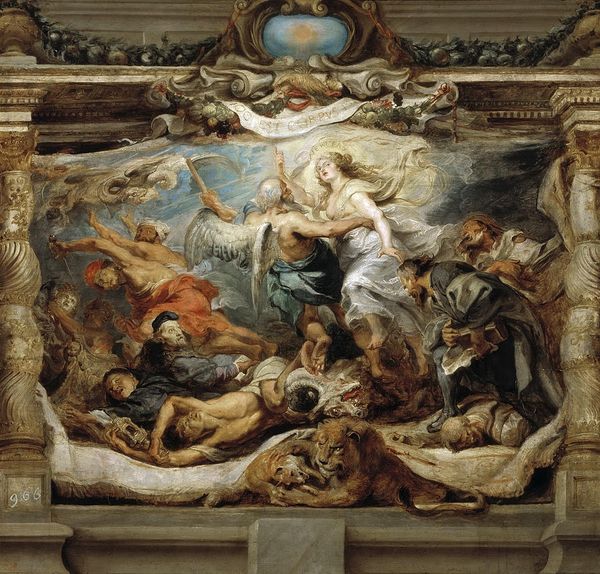
Copyright: Public domain
Curator: Ah, Rixens. A little melodramatic, don’t you think? Editor: This is Jean-André Rixens's "Capitole Toulouse. Toulouse coopérant à la défense nationale" from 1897. It's quite a spectacle, isn't it? Figures swirling in the clouds... there's so much movement and energy. I'm curious, what draws your eye in this painting? Curator: The theatrics, naturally! It's an allegory, pure and simple. Look at the woman in the chariot, draped in the tricolor—she's France, right? Rixens is saying Toulouse is pitching in to defend the motherland. But tell me, what's France riding? Lions? And what about that grim figure looming above, wielding a sword and a torch? Does that strike you as peaceful? Editor: The lions are certainly powerful... perhaps representing the strength and courage of Toulouse? The figure with the sword and torch could symbolize war or revolution? It feels quite turbulent, not exactly reassuring! Curator: Turbulent indeed. This wasn't just some vague artistic exercise; it was commissioned for the Capitole in Toulouse, right as tensions were rising in Europe. Rixens is selling a story: unity, strength, patriotic fervor. Do you buy it? Editor: That’s a lot to consider. Given the historical context, I see the artwork differently. Now, it feels less like pure drama and more like a propaganda. Thanks for pointing out the details. Curator: Exactly. Art isn't just what you see, but what you understand. Knowing the story makes it much richer! Editor: That really gives a new appreciation for the artist’s choices.
Comments
No comments
Be the first to comment and join the conversation on the ultimate creative platform.
